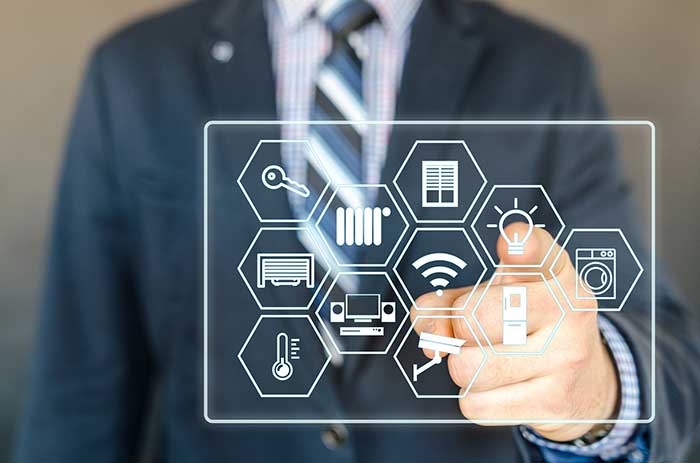
Examples of Sustainable Home Automation: Innovate for a Greener Future
Share
In an era where technology is seamlessly integrated into our daily lives, the quest for sustainability has become paramount. As we strive to reduce our carbon footprint, more individuals and families are turning to sustainable home automation as a solution. This not only enhances convenience but also contributes to a greener planet. This article will delve into various examples of sustainable home automation that can transform your living space into an eco-friendly haven.

1. Smart Thermostats: Precision in Energy Use
Smart thermostats are among the most popular examples of sustainable home automation. These devices allow homeowners to control heating and cooling systems with greater precision, significantly reducing energy consumption. By learning your schedule and preferences, smart thermostats like Nest or Ecobee can adjust temperatures automatically, ensuring that energy is used only when necessary. This not only saves money but also reduces the environmental impact of excessive energy use.
Furthermore, smart thermostats provide detailed energy reports, helping you understand your consumption patterns and identify areas for improvement. According to Advanced Living Solutions, incorporating such devices can lead to substantial energy savings and contribute to a more sustainable lifestyle.
2. Intelligent Lighting Systems
Lighting is a crucial aspect of home automation that can significantly impact energy consumption. Intelligent lighting systems, such as Philips Hue or LIFX, offer a range of options for creating an energy-efficient home. These systems allow users to control lighting remotely, set schedules, and even adjust the brightness and color of the lights based on the time of day or activity.
By integrating motion sensors, lights can be programmed to turn off automatically when a room is unoccupied, further reducing wastage. For more insights on making lighting more energy-efficient, check out this guide.
3. Water Management: Smart Leak Detectors
Water conservation is another critical aspect of sustainable home automation. Smart leak detectors, such as those offered by Flo by Moen or LeakSmart, play a vital role in preventing water waste. These devices alert homeowners to leaks or unusual water usage patterns, allowing for timely intervention and repair.
Incorporating smart water management solutions can save thousands of gallons of water annually. For more information on how water leak detectors work, visit this blog.
4. Solar-Powered Home Automation Devices
One of the most exciting developments in sustainable home automation is the integration of solar power. Solar-powered devices, such as security cameras, outdoor lighting, and even smart blinds, harness renewable energy, reducing reliance on traditional power sources.
Solar panels can be integrated with home automation systems to optimize energy use, ensuring that devices are powered sustainably. This is a significant step towards achieving a carbon-neutral home. For more innovative products, check out these eco-friendly automation ideas.
5. Voice-Controlled Assistants: Seamlessly Manage Your Home
Voice-controlled assistants like Amazon Alexa and Google Assistant have become integral to home automation. These devices allow users to control various aspects of their homes using simple voice commands. By integrating with other smart devices, voice assistants can help manage everything from lighting to security systems, making it easier to maintain a sustainable home environment.
6. Smart Energy Meters: Monitor and Optimize Usage
Smart energy meters provide real-time data on household energy consumption, enabling homeowners to make informed decisions about their energy use. By identifying peak consumption times and high-energy devices, users can adjust their habits to reduce energy waste.
These meters can also be integrated with other home automation systems to further optimize energy use. For a deeper understanding of how home automation can aid in environmental sustainability, visit this article.
7. Eco-Friendly Appliances: Efficiency at its Best
Modern appliances are designed with energy efficiency in mind. Eco-friendly refrigerators, washing machines, and dishwashers consume significantly less energy than their predecessors. By integrating these appliances with a smart home system, users can monitor and control their operation, ensuring they run during off-peak hours when energy demand is lower.
Why Choose Sustainable Home Automation?
Investing in sustainable home automation offers numerous benefits beyond energy savings. It enhances convenience, increases property value, and contributes to a healthier environment. With the growing concern over climate change, adopting sustainable practices is no longer optional but essential.
Moreover, governments and organizations worldwide are offering incentives and rebates for homeowners who invest in energy-efficient technologies. This makes it an opportune time to explore sustainable home automation solutions.
Conclusion
As technology continues to evolve, the potential for creating smarter, more sustainable homes is limitless. By embracing sustainable home automation, individuals can play an active role in reducing their carbon footprint and promoting a healthier planet.
For more information on the latest advancements in eco-conscious living, consider exploring smart home AI solutions that are geared towards sustainability.

FAQ
1. What are the benefits of sustainable home automation?
Sustainable home automation offers several benefits, including reduced energy consumption, lower utility bills, increased convenience, and a smaller carbon footprint. It also enhances property value and can qualify homeowners for government incentives.
2. How can I start making my home more sustainable?
Start by integrating smart devices like thermostats, lighting systems, and leak detectors into your home. Consider renewable energy solutions like solar panels and energy-efficient appliances to further reduce your carbon footprint.
3. Are there any incentives for adopting sustainable home automation?
Yes, many governments and organizations offer incentives, rebates, or tax credits for homeowners who invest in energy-efficient technologies. Check with local authorities or energy providers for available programs in your area.
